- Administrator
- Albums and Singles
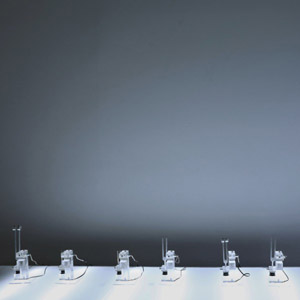 Utilizing the sound of tuning forks, a method of generating tones that goes back far into history, Nicolas Bernier places them in a motorized, computer controlled installation that belies the simplicity of its core. The single piece moves quickly, evolving from the simple resonating tones to a dense, complex synthesis of the naturally captured resonance and the computerized processing of the pure source material.
Utilizing the sound of tuning forks, a method of generating tones that goes back far into history, Nicolas Bernier places them in a motorized, computer controlled installation that belies the simplicity of its core. The single piece moves quickly, evolving from the simple resonating tones to a dense, complex synthesis of the naturally captured resonance and the computerized processing of the pure source material.
This approach to creating music is not a new one for Bernier, who has utilized numerous forms of archaic and unconventional sound generation tools (typewriters, malfunctioning machinery, etc.) but paired with modern technologies to create a hybrid of the old and new.The result sounds like neither time period specifically, but instead exists in some ambiguous area between the two.At the same time he juxtaposes composition and improvisation as well, with some moments of this long piece sounding rigidly structured by the machinery he created, and others feeling like knob twiddling at its finest.
The introductory moments of the piece stick mostly to the natural sound of tuning forks:each crystal clear chime is allowed to reverberate and resonate into silence, the space between the tones carrying just as much importance.The various tuned forks begin to overlap with one another, the fragmented sounds meld together, and with the added sine waves the complexity becomes astounding.
The digital manipulation is rather subtle at this point, mostly limited to looping and echoing pieces of the sound to extend it.As the processing and the machinery both speed up, the quick tones hitting in rapid succession it begins to resemble a large, digitally manipulated music box.Things begin to change once some extremely low end passages come in and offset the sharp metallic ringing sounds that have defined the composition up to this point.
At this point, about half way through, the organization of the piece seems to come apart, with shards of high end harshness cutting through and the ultra-sonic microtones make for what I assume is a perfect simulation of tinnitus.Everything here becomes a churning mass of noise that still resembles the standard sound of a tuning fork being struck at times, but only vaguely.The closing moments go back to a more stripped down approach, but now heavily bathed in the digital processing from before, ending in a realm of hushed, inorganic textures and near silent bits of noise.
I often find this type of academic sound art challenging to listen to too frequently, but that was not the case with Fragments.I was engaged throughout my first listen, and I gave it a second spin a relatively short time later.Bernier does such an impressive job at mixing the natural and the synthetic, and at times the work hints at the loose improvisation of harsh noise and the clinical precision of the minimalist of techno music without ever fully sounding like either one.That ambiguity, and the album’s fast pacing, make for an excellent work.
samples:
- Frequencies (a/Fragments) (Excerpt 1)
- Frequencies (a/Fragments) (Excerpt 2)
- Frequencies (a/Fragments) (Excerpt 3)
 
Read More
- Administrator
- Albums and Singles
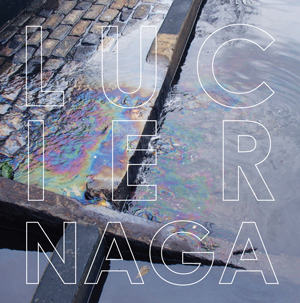 Joao Da Silva’s Luciernaga project has been active only a relatively short time thus far, with releases dating back to 2010, and obviously material here going back even further. This disc compiles selections from ultra limited cassettes, split releases, and unreleased work that stands out well in the often crowded field of ambient drone works. Nicely alternating between harshness and soft, gauzy textures, the result is a dynamic and cohesive collection of material.
Joao Da Silva’s Luciernaga project has been active only a relatively short time thus far, with releases dating back to 2010, and obviously material here going back even further. This disc compiles selections from ultra limited cassettes, split releases, and unreleased work that stands out well in the often crowded field of ambient drone works. Nicely alternating between harshness and soft, gauzy textures, the result is a dynamic and cohesive collection of material.
Of the ten pieces collected, I felt myself latching on most quickly to the ones that featured more overtly perceptible instrumentation, or at least sounds that resemble conventional instruments.The spacey, reverberating guitar bathed in a tasteful sea of fuzz that cuts through the cavernous warehouse ambience of "If You See/The Pulse of Water (Reprise)" is a perfect example of this.A similar late appearance of distorted guitar also adds a lot to "Long Wave", offsetting the haunting melodic electronics that precede it.
Not so clear is the possible vintage organ of "Maquinaria" that is coated in tremolo to approximate a slow rhythmic pulse.It takes its time, but the slow burn approach builds the space around the sound up nicely, even if the evolution is subtle.More immediate is "Are Crawling," with a nasal, panning burst of electric sound that, once the layers are stripped away a bit, sounds like it could be the twang of a sitar.
Other pieces seem, at least on the surface, less obvious in their source.The rhythmic feel of "She Is Here, With Us" is structurally similar to "Maquinaria," but comprised mostly of heavy, booming electronic noises that, paired with the funereal pace, is moody to say the least.The shimmering noises and fuzzed out bursts of "Fuente" are part of a rather short piece, but the piece does accomplish what was intended quickly via its light and floaty sound.
That lighter feel appears again on "Something Witchy" but within a muted framework that works with a similar palette of sounds but results in a film-score like piece of audio noir.The long closing composition "Cadaveres" makes for the ideal climax to this collection.Mixing in the defining elements of the Luciernaga sound into a single work, it has a noisy guitar squall that is rather dissonant, but held back by a calm ambiance that balances everything out, while the latter bits bringing in some shrillness that keeps it nice and acerbic.
With his sparse discography, this disc makes for the perfect jumping in point to hear the work of Joao Da Silva.By all accounts it is just a tidying up of a mostly out of print back catalog, so it manages to not come across as an epilogue like these works often are for many artists.Instead it works as an excellent primer for what I hope to be many more new releases.
samples:
 
Read More
- Duncan Edwards
- Albums and Singles
 This trio from Tel Aviv has created driving and airy songs suffused with somewhat doom-laden yet inspiring vocals, hollow rhythms, and gauzey guitar, for an album which could easily masquerade as a release from 1980s Manchester or Glasgow.
This trio from Tel Aviv has created driving and airy songs suffused with somewhat doom-laden yet inspiring vocals, hollow rhythms, and gauzey guitar, for an album which could easily masquerade as a release from 1980s Manchester or Glasgow.
Juvall Harring wrote the songs for The World Is Well Lost while in something of an exile. His wife was home in Israel, his grandfather had just passed away, and his friends were protesting in the streets of Tel Aviv. Meanwhile he was alone in Berlin, basically in a somewhat depressed state singing in a room alone and making demos. That state makes for rather ecstatic listening since, through a necessarily slow process of recording to two-track and gradual layering, the finished form of this music has such a strong sense of well-crafted economy and precision.
Harring sings in Hebrew but the effect, either of that language or of his brooding voice, is somehow just right to create this driving, moody, melodic, hollow-toned atmosphere. This is the kind of sound which relies less on lyrics and much more on the voice as an additional instrument of color and shade. Oddly, though, at times some of the words do almost translate into surprisingly apt lines or phrases. At one point Harring appears to sing "showing me the echo" as well as "memory, gets in front of her." Later I could swear I hear "rain, falls, waiting" and "lonely shore" or "love me, sure." There are other such moments which add to an album that he has described as concerned with "End of the world, but at the same time, togetherness. Also retroism as escapism, and escapism as a positive thing, rather than a cop out."
Vaadat Charigim’s influences are pretty open to see, and there is no need for me to name names. On a couple of tracks, though, they sound as if they are falling, if not exactly through space sending a chiming coded message to Earth, then at least down a very big well. The World Is Well Lost may feasibly be too droney and shoegazey for some people and too light for others - it was released at the tail end of 2013 and the group are playing in the US in March 2014.
 
Read More
- Administrator
- Albums and Singles
 This Brooklyn-based composer's debut release for Students of Decay is quite an unusual effort, placing its emphasis most prominently on frequently untreated field recordings of natural spaces (as well as a few unnatural ones).  Even the instrumentation is atypical, as Guthrie uses violoncello and contrabass to weave a creaking, moaning bed beneath French horn playing that frequently sounds like a very large, very sad bird.  There is seemingly not much happening compositionally (overtly, anyway), but Codiaeum Variegatum's languorous, organic, and unfamiliar soundscapes are a lovely place to linger nonetheless.
This Brooklyn-based composer's debut release for Students of Decay is quite an unusual effort, placing its emphasis most prominently on frequently untreated field recordings of natural spaces (as well as a few unnatural ones).  Even the instrumentation is atypical, as Guthrie uses violoncello and contrabass to weave a creaking, moaning bed beneath French horn playing that frequently sounds like a very large, very sad bird.  There is seemingly not much happening compositionally (overtly, anyway), but Codiaeum Variegatum's languorous, organic, and unfamiliar soundscapes are a lovely place to linger nonetheless.
This album takes its name from the croton, a plant type with seemingly infinite leaf forms (and a very enthusiastic following).  In fact, it is probably safe to assume that Guthrie used crotons as the thematic basis for the album's content as well, as each of the six songs is titled with a descriptive phrase that could be used to describe a plant and all seem like (increasingly divergent) variations on a theme.  The opening "Branching Low and Spreading" nicely covers just about everything that Guthrie has to offer on Variegatum: deep, groaning string drones; quavering, animal-like French horn moans; and a backdrop of happily chirping birds near a river or waterfall.
The rest of the album does not initially depart very far from that pleasing template, which is perfectly fine–it just means that Codiaeum feels more like a single ebbing and flowing piece that grows increasingly strange rather than six discrete ones.  Things take a deceptively long time to go off the rails though, as "Strongly Leaning with Irregular Crown" only enhances its droning strings with an unexpected passage of bowed arpeggios and a very spirited squawking solo by a bird who is clearly trying to make the most of his big break.  "Unlike More Slender and Graceful," on the other hand, sounds like a negative image of the previous pieces, as Guthrie's strings sound distant, hollow, and vaguely metallic.  "Long Pendulous" is then even stranger still, sounding like Anne is playing strangled, moaning French horn in a sewer beneath a city, accompanied only by a chorus of angry tea kettles or a swarm of mutant crickets.
The proceedings continue to occupy very strange territory with the album's longest and arguably best piece, "Rough Above with Uneven Base," as Guthrie unleashes a wonderfully dissonant and undulating bed of hazy drones and horn swells.  I suspect the wobbly, "falling apart" feel of the drones is due to some sort of tape manipulation, but most of the piece is able to sustain the bizarre illusion that it is an untreated underwater field recording of a bunch of melancholy whales lamenting their lot in some foggy, secluded cove.  "Persists into Winter" then closes the album with a radical change in ambiance, dispensing with music almost entirely to approximate a very lo-fi reverb-heavy recording from the depths of a subway tunnel.  Guthrie occasionally bows a string or two, but the piece definitely seems most focused upon providing an unusual sense of place.
"Winter" is admittedly a somewhat weak note to end the album on, but a lot of Guthrie's charm lies in the album's lazily, meandering "aural travelogue" feel and in her restraint, so it is not exactly a wrong note.  The rest of Codiaeum Variegatum's appeal, for me anyway, is mostly due to the natural flow of the early pieces and their relative guilelessness.  In fact, a small part of me was actually disappointed that Anne took the album into increasingly experimental and subterranean places after its strong, but comparatively static, opening.  Ultimately, however, I liked this album quite a bit.  I certainly have not heard much else that sounds like this and Guthrie's confidence in throwing herself wholeheartedly into something so unconventionally musical is impressive, as is her complete avoidance of any clichés or current experimental music trends.  Codiaeum is a refreshingly understated, small-scale gem.
 
Read More
- Administrator
- Albums and Singles
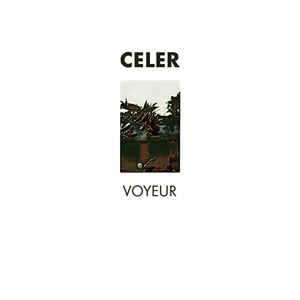 The material that makes up Voyeur dates back to 2008, when Celer was at their most prolific as a duo. Intended to be a film score, the sound of this album is in league with the contemporaneous work they were putting out, but there is a distinctly different feel to this album, possibly due to its conceptual framing, or perhaps because of the project’s more conservative release schedule as of late.
The material that makes up Voyeur dates back to 2008, when Celer was at their most prolific as a duo. Intended to be a film score, the sound of this album is in league with the contemporaneous work they were putting out, but there is a distinctly different feel to this album, possibly due to its conceptual framing, or perhaps because of the project’s more conservative release schedule as of late.
Unlike many of the other Celer releases of this time period, Voyeur consists of smaller, independent pieces rather than long form compositions, or sprawling single-track sequencing of shorter works.This is an asset, because it introduces a consistently shifting mood or flow to the album while still linking each piece together sonically.For example, the shrill, glass shattering tones of "Bitter Light and Anticipating a Day Heat (The Isolated)" are not only sharp, but erratic in their appearance, creating a sense of tension that is never fully released.It is followed by "The Spilling, Romantic Goodbye (The Lovers)," a piece which dulls the aforementioned tones back to a more metallic shimmer and therefore has a looser and less oppressive sense.
As Celer works heavily with quiet passages and hushed moments, the jagged feedback of "Binoculars, a Telephone, and Fear (The Note)" cuts through wonderfully, preventing the album’s more peaceful moments from falling too far into the background.The low frequency malignancy and dissonance of "Bass Puncture (The Pressure Urge)" also does an exemplary job of conveying aggression while not relying on volume surges, and the harsher, spiky second half of "Lofty Swells (An Impending Advance)" is another wonderful example of the album defying expectations.
At this point, Celer was a duo of Will Long and his late wife Danielle Baquet-Long, who contributes vocals to this album.Perhaps it is that fact, along with the thematic nature of the album, that paints everything with a certain intimacy that is at times almost unsettlingly personal.This is most prevalent in the latter moments of the record, with "Impossible Escape (The Amicable Understanding)" and "Finale (After Midnight)" especially.The former has a consistent, constant sound (as opposed to the ebb and flow of many of the other pieces) but seemingly confined or held back by some external force, the source of the forced restraint lurking somewhere in the distance.The latter mirrors the opening, but with what sounds like fragments of an old pipe organ being slowly peeled and disentangled.The album closes with a lighter feel, but a sad undercurrent that tinges the piece.
Using the label of Voyeur, and the references made throughout the titles of these pieces, there is a representation of the more sinister, disturbing aspect of the term, but by no means is it that one sided.The gentler moments, especially on the closing "Finale," instead come across more like an intimate look inside someone’s life and all of the personal details that would come with such an observation, rather than a lurking act of creepiness.In a culture so focused on other people’s personal lives, Will and Danielle Baquet-Long have created a work that shows the personal, emotional side of such voyeurism.
samples:
- Binoculars, a Telephone, and Fear (The Note)
- Bass Punctures (The Pressure Urge)
- Impossible Escape (The Amicable Understanding)
 
Read More
- Administrator
- Albums and Singles
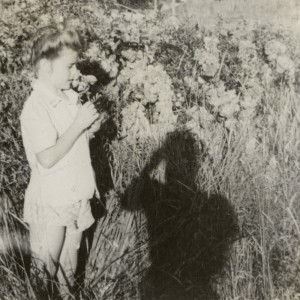 The single piece that makes up this album began life three years ago as part of Szczepanik's hand-made, subscription based Ante Algo Azul series. Expanded from its original 18 minute duration to a full 53 minute length, it maintains the identity of the original work while building upon it dramatically. This new version in some ways feels like simply more, and in this case that is a perfectly good way to rework the piece.
The single piece that makes up this album began life three years ago as part of Szczepanik's hand-made, subscription based Ante Algo Azul series. Expanded from its original 18 minute duration to a full 53 minute length, it maintains the identity of the original work while building upon it dramatically. This new version in some ways feels like simply more, and in this case that is a perfectly good way to rework the piece.
The aforementioned subscription series of 3" CDRs that Szczepanik released in 2011 seemed to, at the time, represent him taking different approaches and techniques with his art.In some cases, experiments such as these run the risk of delving into self-indulgence, but these 12 pieces never did such a thing.As evidenced, those experiments did make for jumping off points into longer, more developed works such as this, and while the sketch of Not Knowing previously released stood powerfully on its own, Szczepanik expands on it in every way while keeping the emotional core of the piece the same.
Like the early version, Not Knowing begins with a hushed, surging low end pulse that seems to go on a bit longer, exhibiting small, microtonal changes in sound that slowly build up the sound.This initial passage has a cold, detached feel to it that soon turns lighter, bringing in soaring tones and uplifting bits that capture the sun's warmth on a cold winter's day.While uplifting, there is a subtle, dramatic flair to it that leads to grandiose, dramatic highs of beauty.
What sets the long-form version of this apart is that the piece then drifts into a pensive, melancholic space, conjuring memories ghosts of the past.Simultaneously nostalgic and chilling, it reaches further into emotional directions that were only hinted at in the original piece.Concluding in the manner that it began, Not Knowing comes full circle, both sonically and emotionally, back to that more isolated, frigid feeling that started it all.
Nicholas keeps the changes and alterations to a tasteful minimum while adding a significant amount of new content.Like a short film that is expanded to a full length feature, Not Knowing is a completely realized work based upon one that stood strongly by itself.Its changes are done by the hand of an already accomplished young composer that deserves to be recognized as one of the current masters of the genre, and is an extremely fitting tribute to Eliane Radigue.
samples:
 
Read More
- Administrator
- Albums and Singles
Pre-Release of the Double Vinyl album Parade by Nurse With Wound and Graham Bowers.
ART EDITION
This pre-release is limited to 18 copies and is a special ART EDITION of the double vinyl album of Parade.
Each album contains a totally superb, unique, original artwork by Steven Stapleton aka Babs Santini, all specifically created for this art edition, numbered and signed by Steven.
The Red Wharf website currently has photographs of three of the artworks, illustrating the quality of Steven's artwork, all are mounted on the reverse face of a 8.26" x 8.26" (210mm x 210mm) full colour folded Art Print, and each one is individually signed and numbered by Steven and Graham and is enclosed in a special presentation envelope.
LIMITED EDITION
This pre-release is a LIMITED EDITION of 185, each containing a 8.26" x 8.26" (210mm x 210mm) full colour folded Art Print.
Each one individually brush-marked by Steven and numbered and signed by Steven and Graham.
.
Please visit the Red Wharf Shop for further details www.red-wharf.com/shop.htm
The format and track list of the double album is as follows:
Side One:
OFF TO HELL ON A HANDCART
APES AND PEACOCKS
BELLS OF HELL GO TING A'LING A'LING
Side Two:
RING A'RING O'ROSES
A TISSUE OF DECEIT
Side Three:
RATS, CATS AND DOGS
BEYOND THE PALISADE
THE BITTER END
Side Four:
DIPLOID (PARADE ~ EPILOGUE)
--------------------------
UPDATE
Release of the double vinyl album Parade by Nurse With Wound and Graham Bowers.
The ART EDITION of 18 have all been sold.
LIMITED EDITION
A LIMITED EDITION of 185, each containing a 8.26" x 8.26" (210mm x 210mm) full colour folded Art Print.
Each one individually brush-marked by Steven and numbered and signed by Steven and Graham.
These are now available at the Red Wharf Shop for further details http://www.red-wharf.com/shop.htm
Read More
- Administrator
- Albums and Singles
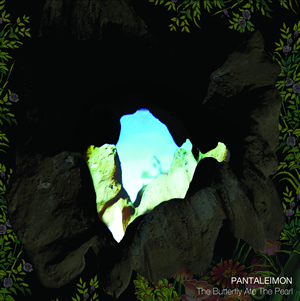
Andria Degens' first record in five years as Pantaleimon coasts along in a haunting lull, halfway between coherence and a nonsensical haze. A luxury of psychedelic drone and lush orchestration, the narcotic quality of this record is endearing even if it is not fully satisfying. I return often to a few beautifully performed songs buried among a number of other simply competent ones, but I have to admire how engrossing Degens' style is when absorbed at an album's dose.
The Butterfly Ate The Pearl has an impressive cast of contributors on board with Andria, ranging from Steve Finnerty (of Alabama 3) and Jay Darlington (of Oasis and Kula Shaker) to James Blackshaw and even Will Oldham. But honestly, their input is totally backgrounded by Degens' dominating voice. The sole element tethering this music to the conscious world, the lyrics of Pantaleimon are fluid and lush without seeming forced. Scarcely rhyming, Andria's poetic prose is uplifting by a bevy of strings and treated guitars and synthesizers and plentiful reverb. In the better points of the album, such as on early standouts "Diamond River Run" and the title track, there is a timeless comfort to how her voice dances around the pacing of the songs, in a way indebted to alternative rock with its distant blasé and listless delivery.
She is irreverent, perhaps; psychedelia is difficult to deliver with sincerity and I get the feeling Andria has found a safe middle ground to attempt proselytizing for the natural world or to share deep secrets while avoiding the traps of overly earnest purple prose. On the most upbeat song of the album, "Elevation of a Dream," Degens approaches something very familiar to fans of great dream pop, a rattling ride cymbal and a synth buzzing along in a two-part movement of repeated passages and little golden moments. It is the finest moment on the album, a tender crushing refrain of "we are starlight" fading out in unaccompanied sadness. It is succeeded by "Ember," its psuedo-religious organ trills, sparse choral accompaniments and sturdy percussion embodying the confidence of the album's lead single.
The energy tapers off a bit at that point, concluding in a fairly underwhelming two song suite to end it all. "Morning Star" and "Summer Reigns" both aim for a kind of miraculous summation of moods and timbres that are not fully realized but are still fairly pleasant. The album is slow in peak and comedown, with a stellar middle, a feat which in my mind seems rare. Pantaleimon never attempts to make much of an impression with her music through its soft strokes and gently ethereal tones. Still, it is at times impactful; at times stunningly so.
Samples:
 
Read More
- Administrator
- Albums and Singles
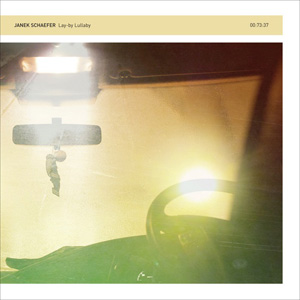 Lay-by Lullaby is at its core a companion piece to Schaefer's installation work Asleep at the Wheel, which functioned as a call to social awareness that can be lost through the constant movement of modern life symbolized by the repetitive act of automobile travel. This album, however, emphasizes the opposite sensibility. It results in a muted, almost hallucinogenic series of calm compositions that revel in the repetition.
Lay-by Lullaby is at its core a companion piece to Schaefer's installation work Asleep at the Wheel, which functioned as a call to social awareness that can be lost through the constant movement of modern life symbolized by the repetitive act of automobile travel. This album, however, emphasizes the opposite sensibility. It results in a muted, almost hallucinogenic series of calm compositions that revel in the repetition.
This lengthy album trades mostly in sparse, pensive tones and light, crackling passages of static and blurred radio transmissions. "Radio 101 FM" and "Radio 102 FM," for example, stick with bare arrangements of expansive tones mixed up with the occasional sound of a passing motor vehicle. The latter has a simple two-note progression that makes for a slightly more melodic, musical feel throughout.
On "Radio 105 FM" and "Radio 106 FM," Schaefer employs some excellent crackling static that does an exceptional job of replicating the sound of tires on asphalt, and both pieces strip the overall mix down to an infrequent, low register tone as opposed to the album’s other, more relaxed elements. The automobile symbolism also appears distinctively on "Radio 111 FM," where the analog electronics hum away like an idling car engine.
Other pieces focus much more on the conventional, electronic parts of Schaefer's art."Radio 103 FM" has a more conventional synthesizer sound, and one with a 1980s digital keyboard sheen to it."Radio 110 FM" features effective string-like electronic flourishes that open it in a more clearly dramatic fashion, although the closing minutes are more meditative textures than film-score intensity.
Mixed in with the light tones and melodies is a collection of field recordings taken from London's M3 motorway, the occasional revving engine or passing vehicle making for a slightly jarring interruption that adds dynamics, but does not at all distract from the sound as a whole.
This fits with the disc's aesthetic perfectly: Schaefer's gentle gliding melodies and hushed bits of static emulating the hypnotic feel of late night driving with the only illumination coming from an occasional street light or the moon in the night's sky.Just as things become too peaceful, a passing vehicle shakes the driver awake to begin the cycle once again.
It is this interjection of the motorway recordings that gives Lay-by Lullaby its distinct personality.That is not to say that Janek Schaefer's ambient electronic work is not effective on its own, quite the contrary.His tastefully understated melodies and textures are brilliant on their own.But here, the way they mimic the hypnotizing repetition of night driving with the interrupting recordings of passing cars is what makes this a brilliantly effective album.
samples:
 
Read More
- Administrator
- Albums and Singles
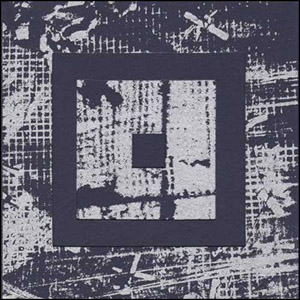 Pierre Jolivet (Pacific 231) and Philippe Blanchard (Lieutenant Caramel) have both been active in experimental music since the mid 1980s, and this is not their first collaboration. However, Aunt Sally is one of those albums that, even after sitting with it for a while and a number of repeated listenings, I still have mixed feelings about. Some moments come across as brilliantly absurdist pairings of cut up music and junk noise. Then there are moments that feel simply like random bits of sound slapped together haphazardly, justifying hat often leveled complaint against this sort of challenging art.
Pierre Jolivet (Pacific 231) and Philippe Blanchard (Lieutenant Caramel) have both been active in experimental music since the mid 1980s, and this is not their first collaboration. However, Aunt Sally is one of those albums that, even after sitting with it for a while and a number of repeated listenings, I still have mixed feelings about. Some moments come across as brilliantly absurdist pairings of cut up music and junk noise. Then there are moments that feel simply like random bits of sound slapped together haphazardly, justifying hat often leveled complaint against this sort of challenging art.
The pieces that open and close the album are the most impressive, largely because both are live performances.Album opener "Yellow House in Beirut," recorded in Lebanon in 2012, mixes in some French spoken word pieces with dissonant noises and fragmented sounds into a chaotic, clattering mass."L'Autre Massacre," a performance from Dublin in 2011, is a bit harsher with violent stabs and outbursts of sonic junk amidst a world of echoes and sound fragments.
Between these performances are a series of studio recordings that, due to the fact they were subject to overdubs and replications, often seem too unfocused and random for their own good.The low frequency rumble and guitar feedback of "Bagliore" helps it to stand out, but the overuse of random cut-up bits end up seeming more like filler than anything with deliberate artistic intent.
"Angela Palnep Chu" features a selection of sampled musical elements that are identifiable within the chaos, but with the heavy processing it becomes hard to fully discern.Mixed in with the other messy detritus and spoken word, it has a sense feel to it, but also drifts into directionless knob twiddling that drones on for a bit too long.The looped, violent sounds and harsh outbursts of "Birolo" also are a plus, but within the vacuum cleaner din of white noise, its power is somewhat diluted.
There are some captivating moments to be heard on Aunt Sally, and these moments are what motivated me to return to this album on multiple occasions.The problem is that between these high points are passages that seem directionless and too random, and I caught my attention drifting away from the album.There are some excellent segments of this album interspersed throughout.Without the editing though, the disc just sounds bloated and, like an overly long film, it diminishes the impact of the highlights.
samples:
 
Read More


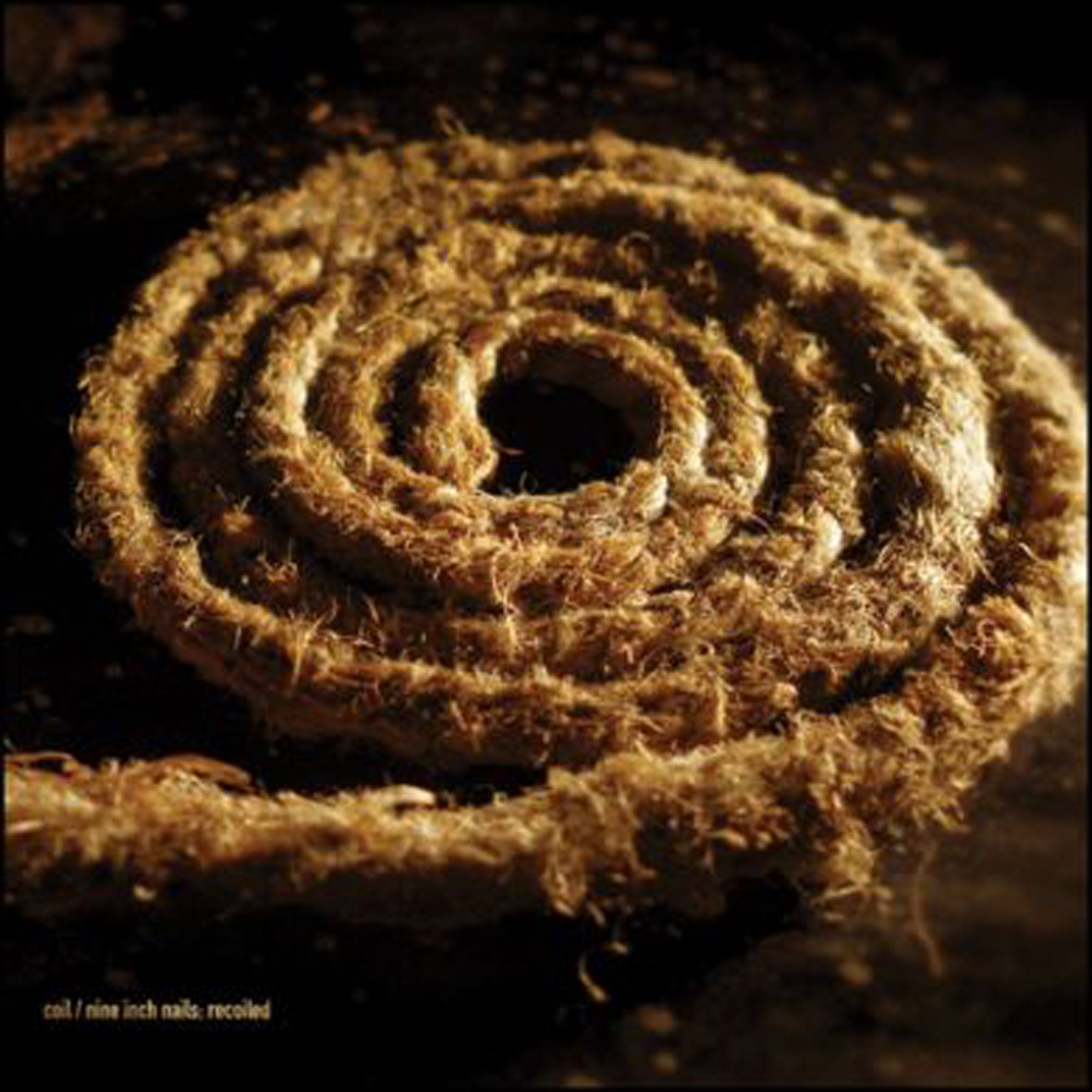 aborted
aborted